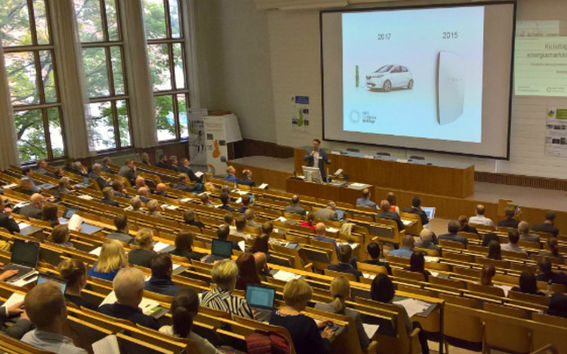Internet of Energy encourages consumers to use their own energy

New ways of generating energy are essential to reduce emissions and mitigate climate change. Now consumers have new opportunities to affect not only the size of their electricity bill, but also the income derived from energy generation.
Interesting new ways to produce energy and participate in energy markets were reviewed in the Consumers in the Energy Market seminar that was organised through the Finnish parliament’s Energy Renovation Group, the Smart Energy Transition project and the Neo Carbon Future project on 27 September.
Energy revolution will happen in communities
Energy generation in the future will be more often at the community level. This could mean that individual households produce or save energy together with their neighbours. Thus consumers act as their own “virtual power plants” by installing for example a joint solar panel system, a heat pump or a two-way electric car charging stations. Many of these solutions are very local.
‘Consumers become their own local “power stations” using different approaches and can almost achieve self-sufficiency. By connecting home or property automation to energy producing and consuming devices, consumers can support the functioning of the whole electricity system in the future’, says Karoliina Auvinen, Stakeholder Relations Director for the Smart Energy Transition project at Aalto University.
This kind of flexible consumer participation will improve the stability of the whole electricity system by reducing electricity demand during the winter freeze and other peak consumption periods.
Flexible demand works in Europe
Practical demand response solutions from Europe were presented in the seminar. There is already a lot of distributed generation in Germany and there is sometimes even an oversupply of electricity from renewable sources. The energy company Next Kraftwerke does not own any power plants, but its capacity is 3,2 GW which is generated in a total of 4,500 units.
”The end user will someday become an active participant in the energy market. We already today offer our clients a platform and a service, with which commercial and industrial power consumers and energy producers can affect consumption or production of the energy in real time and save in the energy bill”, says Jan Aengenvoort, Head of Communications and Research, Next Kraftwerke.
There are also good examples in Finland. Oulun Energia’s Farm Power and other services have operated in consumer markets for several years.
‘We have created an Internet of Energy service where the jointly owned solar panels of house co-operative residents, for example, can be connected directly to the property’s own micro grid and solar generation can be divided among the residents on the basis of energy data from smart meters’, explains Oulun Energia’s Sales Director, Seppo Tuomi.
The experts who took part in the seminar were largely of the opinion that consumers in Finland needed to know more about new energy solutions. Taxation of electricity can also play a significant role in increasing the flexibility of the electricity system and in promoting the spread of intelligent energy solutions.
Read more
- Published:
- Updated:
Read more news

Get to know us: Associate Professor Maria Sammalkorpi
Sammalkorpi received her doctorate from Helsinki University of Technology 2004. After her defence, she has worked as a researcher at the Universities of Princeton, Yale and Aalto.
Aalto computer scientists in ICML 2024
Computer scientists in ICML 2024
Getting bacteria into line
Physicists use magnetic fields to manipulate bacterial behaviour